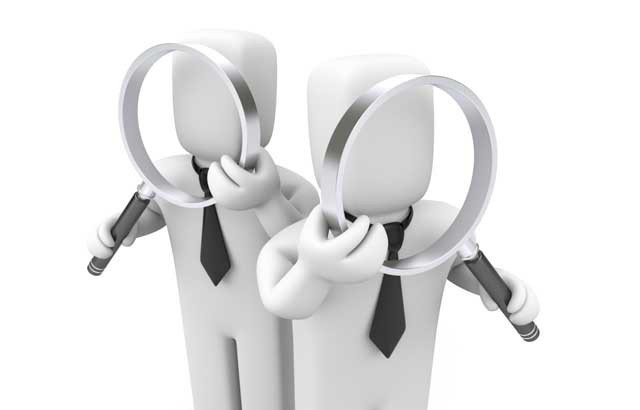In advanced economies, much attention is paid to conducting an external audit. In our country, so far less attention is paid to this type of audit of financial statements than it deserves. but internal financial audit gradually developing. Its legislative base is being developed, specialists are being trained.
Currently, there are not enough scientific and practical developments regarding internal audit. However, the interaction of external and internal audit is constantly growing. What principles are applied in the process of conducting such studies, as well as the main organizational issues, should be known to specialists in various fields.
The essence and purpose
Internal financial audit It is a type of activity of the organization, which, based on internal documentation, controls the management links and various areas of the company. It is produced by a special department that works as part of the audited company. This type of verification is necessary for the enterprise management in order to be able to study and analyze the real state of affairs in their organization.
The information obtained during the study, depending on the form of activity of the enterprise, is used by participants in the meeting of shareholders, the board of directors, members of the production cooperative, the supervisory board or executive bodies.
Spending internal financial control and internal financial audit, governing bodies have the opportunity to make adequate decisions about the future direction of the company. In this case, the purpose of such an audit is to provide them with information on the work of individual links, shops, sections, as well as the entire enterprise as a whole.
Internal audit allows you to obtain reliable information about existing factors that inhibit the growth and development of the organization. Based on these data, management is developing ways to improve the enterprise. Also, governing bodies can evaluate the effectiveness of the company from an expert point of view. The activities of internal auditors are advisory in nature.
Functions
Conducting an internal financial audit allows you to carefully study the features of the functioning of the organization. This is necessary to improve the quality of operations performed by the company, to increase the performance indicators of the organization. For this, the internal audit is carried out in several directions at once. Then, the information obtained during the study is analyzed, and conclusions are drawn about the presence and possibility of eliminating the factors holding back the development.
Internal auditors verify the correctness of compliance and compliance with real indicators of financial and accounting statements. They also evaluate the effectiveness of the control of departments, workshops, branches and all other structural units that make up the organization. Therefore, conducting an internal audit is primarily recommended in large companies.
Next, an assessment is made of the effectiveness of the risk management system that is used in the organization, as well as its financial results. Auditors also study the feasibility and economic benefits of transactions entered into by management. Verification of compliance with the legislation in the organization of the company.
Based on the audit, the auditors give recommendations to increase the efficiency of the entire enterprise and each of its structural units separately.Investigations of some special cases may be carried out, for example, when establishing facts of abuse of one's official duties.
Types of Internal Audit
Internal financial control and internal financial audit can be carried out in various directions. In this regard, their structure includes several species.
In the context of economic activity, a functional audit is performed. It allows you to evaluate the performance of each component of the control system. Cross-functional internal audit examines the completeness of the performance of their duties of individual structural units in their interaction with other shops, sections.
Implementation of internal financial control and audit can also be performed in the organizational and technological aspect. Such a check allows us to study the work of individual management links in the context of the appropriateness of their approaches and ongoing procedures.
When conducting an internal audit, the organization’s activities are also monitored. At the same time, individual business projects are examined to find ways to improve them. The external relations of the enterprise, its image and rating are also studied.
This approach allows a comprehensive audit of approaches to managing the organization.
There is also a separate area of internal control, which examines the compliance of decisions made with the requirements of the law, internal regulations, rules and standards (including formal tasks).
Order of conduct
There is a certain procedure for conducting internal financial audit. It allows not only to study and analyze the operating features existing in the organization, but also to find ways to increase the economic efficiency of the company.
To this end, auditors examine specific documentation. First of all, reporting for several periods should be included here. The information that is indicated in it, as well as statistical, operational documentation, are compared. We study the correctness of reporting, as well as the reliability of the data indicated in it. After conducting an analysis of various financial indicators of the organization, conclusions are drawn on the appropriateness of certain decisions adopted by management.
The list of issues that will be investigated during the audit is approved by the initiator of the internal audit.
Validation Principles
Internal financial audit procedure compiled on the basis of certain principles of this process. By fulfilling these established norms, it is possible to obtain high quality and effectiveness of the verification results.
The first principle of internal audit is priority and consistency. The verification can be carried out according to plan or if necessary. Also, a similar procedure should be objective. For all structural units, the methods and requirements should be the same.
An important principle in conducting an internal audit is openness. The results obtained during the study cannot be hidden. This also applies to its results.
Auditors should not depend on the object of their audit or be its competitor. All stages of the research process should be documented. This also applies to its outcome, as well as the decision.
Also an important principle of conducting an internal audit is courtesy. After identifying inconsistencies and violations during the analysis, as well as fixing them in the relevant documentation, the inspector takes measures to eliminate them.
Verification Steps
Internal financial audit plan includes several steps. The first of these is preliminary planning.At this stage, auditors collect information about the object of verification, analyze legislative obligations and standards that the company applies in its activities. The tasks of future verification are also being developed, and labor costs are being calculated.
At the second stage, the risks of the organization are identified and assessed, a description of the object under study is drawn up. Based on the data obtained, audit tasks are developed. The risks of the imperfection of control, which is carried out at individual sites and in the organization as a whole, are assessed and studied.
Further internal financial audit plan involves the development of a research program. At this stage, a list of the main errors that are present in the implementation of the activity of the object is made out. This takes into account the experience of previous audits. Existing control standards are carefully studied. Possible errors are prevented and corrected.
The audit phase includes the distribution of responsibilities among all auditors. This takes into account their qualifications and experience. Employees carry out an audit according to a previously approved program.
After the audit, the results are evaluated and documented. Internal auditors draw up a research act. The report indicates the identified errors, violations, and also assesses their impact on the results of the company. The recommendations for improving the situation at the studied object are indicated.
Audit progress
Scheduled or unscheduled internal audit occurs according to a certain scheme. The company holds a preliminary meeting. It is organized by the head of the group of auditors. This meeting should be attended by the initiator of the audit or the owner of the organization, the governing bodies of the studied units, as well as other specialists involved in the process. At this meeting, participants in the audit are introduced to each other, approaches to the exchange of information between them are established. The costs of the audit are discussed, as well as the timing and location of the study.
Next, an internal audit is carried out according to the established plan. The team leader is responsible for the verification process. Various errors and inconsistencies are identified. They are recorded in the relevant documents. Protocols and act of internal financial audit considered at the closing meeting.
After identifying errors and inconsistencies, measures are developed to improve the state of activity of the object of study. Specific dates for such actions are being established.
Result of checking
Internal audit of financial institutions and enterprises completed when drawing up the audit conclusion. This is an official document that clearly indicates the results of a study at the facility. Acts, protocols have the right to use in their activities persons who work with the financial statements of the company.
This conclusion shall indicate information about the object of verification, as well as the audits of the financial reporting registers. It also contains a reference to the legislative framework in accordance with which the audit was conducted. The act shall indicate the errors identified during the inspection or their absence. Auditors develop recommendations to address identified inconsistencies and development constraints.
The conclusion is signed by the head of the group, as well as all the employees included in it. The date of the inspection is fixed. After that, it is impossible to make changes to the compiled document. Internal Audit and Financial Analysis allow to improve the quality of management, eliminate negative development factors.
The heads of the audited departments and the entire enterprise sign their signatures. At the same time, they may indicate that they do not agree with the facts stated in the document, as well as specify with which ones.Comments must be substantiated, supported by regulatory acts. The conclusion is drawn up in 2 copies.
The effectiveness of internal audit
Internal financial audit should be objective and effective. To make this possible, it is necessary to ensure the full implementation of all the principles of verification that were listed above.
In order to understand how efficiently and correctly the internal audit was carried out, one should pay attention to a number of facts. First of all, a quality check should be carried out according to previously established plans. Each of its subparagraphs should be carried out as fully as possible.
It is also important to evaluate how many audits were carried out in a given period in an organization. After the research, the auditors should give a number of recommendations to improve the functioning of the company. Effective verification allows you to identify negative traits of management activities. At the same time, it becomes possible to eliminate them and increase economic efficiency, stability and profitability of the enterprise.
Professional standards and ethical standards can guarantee the high quality of internal audit. Currently, they are developed in each large company locally. However, over time, a centralized procedure for creating these documents is planned.
Important qualities of the auditor
Internal financial audit should be conducted under the direct supervision of professionals. Such employees should have independent thinking, not taking on faith the existing allegations about the organization of the organization, its structural divisions.
The internal auditor should look at the facts objectively and with healthy skepticism. This allows you to conduct quality checks. Also, such an employee should ignore personal relationships, listen to the opinions of his team and company management. The analytical ability of the auditor should be high. He will have to clearly express his thoughts and opinions. If necessary, the employee or team leader should be able to defend their position. Often there are various conflicts from which it is necessary to be able to get out correctly.
A team of experienced, highly qualified specialists who possess all of the listed qualities are able to provide high verification results.
Having considered what constitutes internal financial audit, its essence and stages, you can understand the importance of this process. Its development in our country is promising and extremely necessary.